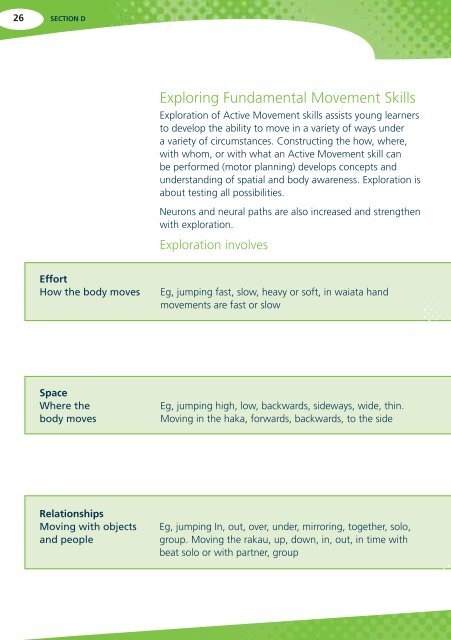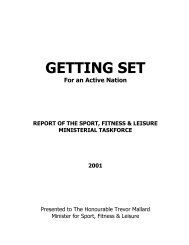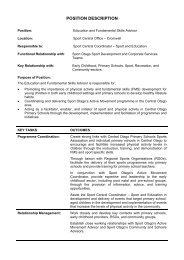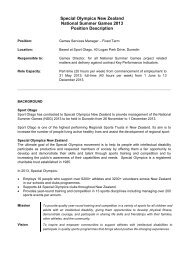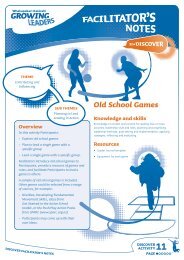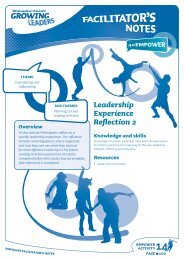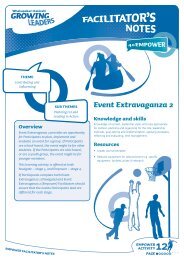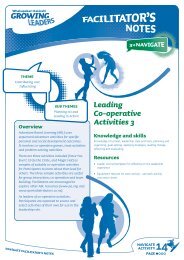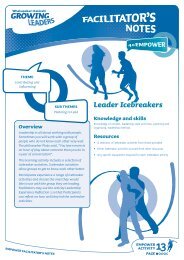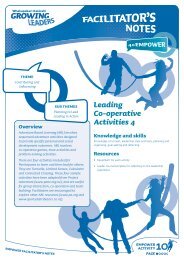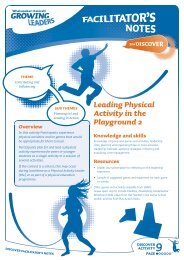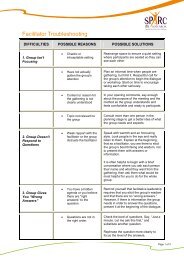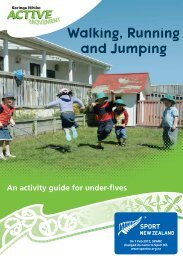An Introduction to Active Movement Koringa Hihiko - Sport New ...
An Introduction to Active Movement Koringa Hihiko - Sport New ...
An Introduction to Active Movement Koringa Hihiko - Sport New ...
You also want an ePaper? Increase the reach of your titles
YUMPU automatically turns print PDFs into web optimized ePapers that Google loves.
26 SECTION D<br />
Exploring Fundamental <strong>Movement</strong> Skills<br />
Exploration of <strong>Active</strong> <strong>Movement</strong> skills assists young learners<br />
<strong>to</strong> develop the ability <strong>to</strong> move in a variety of ways under<br />
a variety of circumstances. Constructing the how, where,<br />
with whom, or with what an <strong>Active</strong> <strong>Movement</strong> skill can<br />
be performed (mo<strong>to</strong>r planning) develops concepts and<br />
understanding of spatial and body awareness. Exploration is<br />
about testing all possibilities.<br />
Neurons and neural paths are also increased and strengthen<br />
with exploration.<br />
Exploration involves<br />
Effort<br />
How the body moves<br />
Eg, jumping fast, slow, heavy or soft, in waiata hand<br />
movements are fast or slow<br />
Space<br />
Where the<br />
body moves<br />
Eg, jumping high, low, backwards, sideways, wide, thin.<br />
Moving in the haka, forwards, backwards, <strong>to</strong> the side<br />
Relationships<br />
Moving with objects<br />
and people<br />
Eg, jumping In, out, over, under, mirroring, <strong>to</strong>gether, solo,<br />
group. Moving the rakau, up, down, in, out, in time with<br />
beat solo or with partner, group


